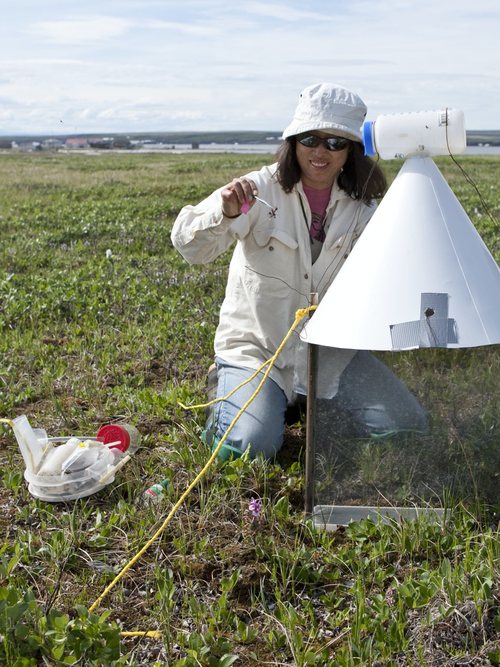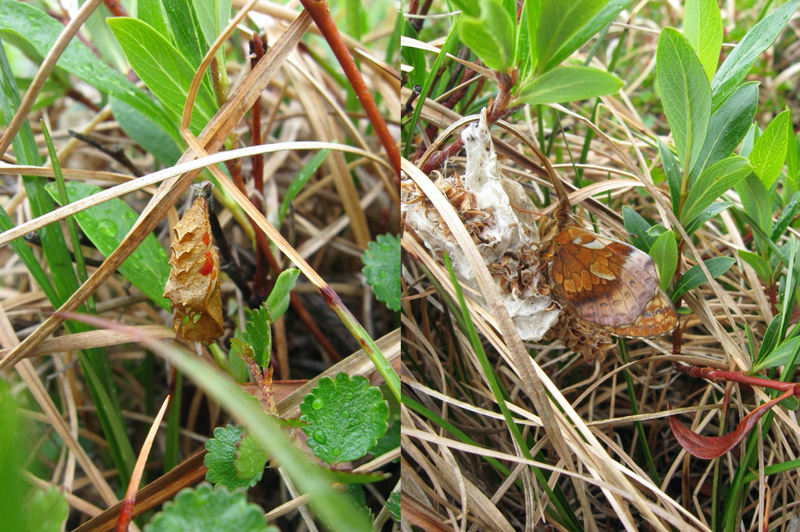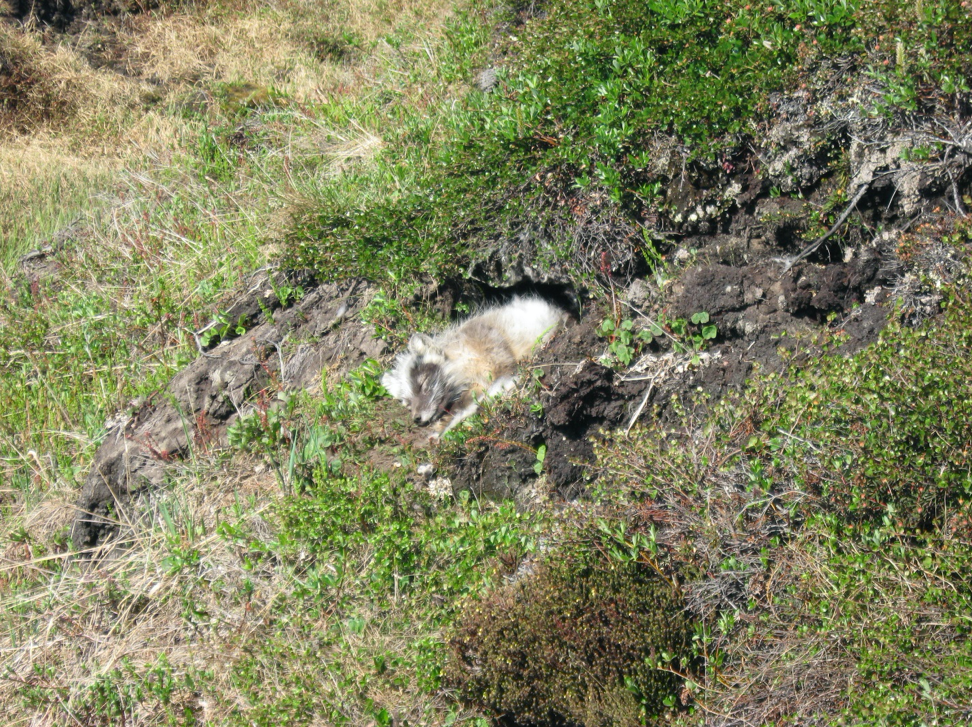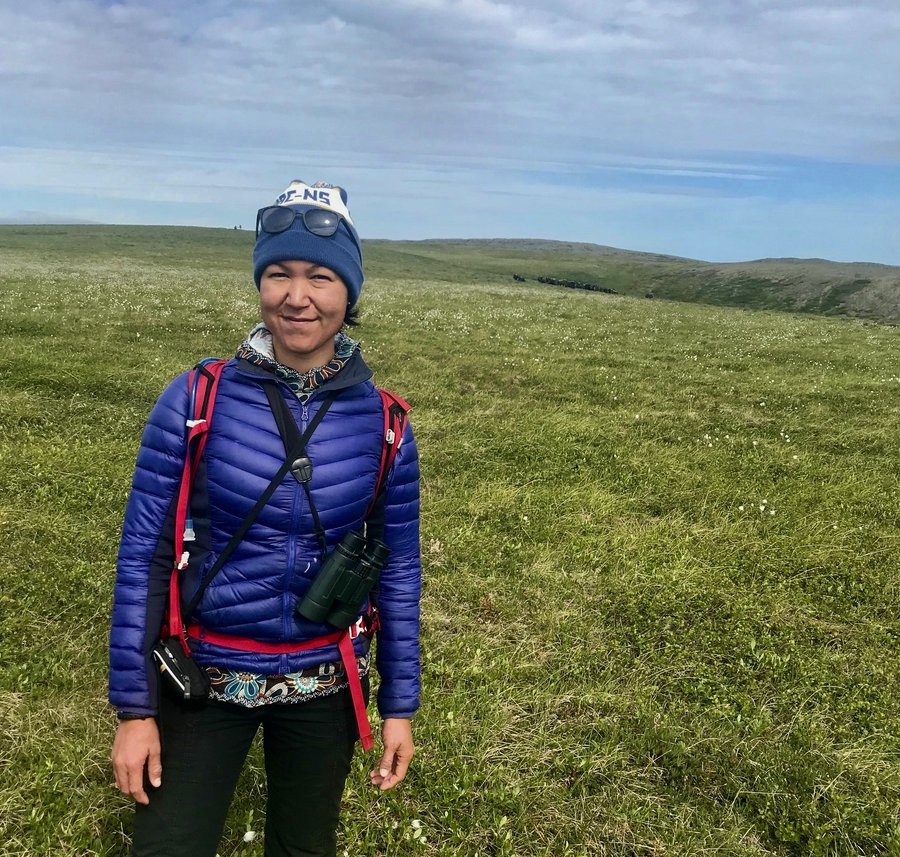Science Chats Part 4: Akkupak
Posted on Sept. 28, 2020
The Yukon North Slope is an incredible place to do research, attracting scientists from around the world. And, while research findings are often published in academic journals for other scientists, what comes out of these projects is important for community members, wildlife managers, and local businesses. It is in everyone’s interest to communicate the science that is happening, and the values and interests of the Inuvialuit of the region. We want to share some of this incredible work with you! Join us in these science chats and check out the latest interview by Kayla Nanmak Arey with Wildlife Biologist Maria Leung. Kayla is an Inuvialuit from Aklavik – the western-most community in the Inuvialuit Settlement Region.
This fourth chat is titled Akkupak, which means ‘now.’
Our conversation with Maria focuses on her Yukon North Slope research during the International Polar Year (IPY). The IPY is a collaborative global effort to learn and document more about the polar regions. Our Arctic home is already experiencing the severe effects of climate change – more than any other region on Earth. For all people that call the Arctic home, adapting to these changes requires the best possible information. The effects of a rapidly changing arctic environment will also affect the rest of the world; the events that happen in the polar regions are not in isolation from the global environment.
There have been three previous IPYs, in 1882-83, 1932-33 and 1957-58. These years were grounded in the geosciences, or earth science. The last IPY was in 2007-2008: it focused on global linkages and human communities. Wildlife Biologist Maria Leung was involved in research that took place on the Yukon North Slope.
 Kayla Arey (KA): What discoveries or research led you to focus your work on the arctic?
Kayla Arey (KA): What discoveries or research led you to focus your work on the arctic?
Maria Leung (ML): When I first had the opportunity to work in arctic/subarctic ecosystems in the 1980’s, it was the sense of adventure and discovery that drew me there. I was a student studying wildlife biology and saw the Arctic as a place to experience a new ecosystem and see flora and fauna that were not found in southern Canada. At the time, climate change was not a central topic in ecological studies or mainstream media.
More recently, during the IPY years (2007 to 2009), I was interested in how climate may be changing the flora and fauna of the North Slope, including species distribution and ecological interactions. For example, are species expanding northward with warming temperatures? Are shorebirds breeding during the period when the most insect prey is available?
KA: What were you studying on the Yukon North Slope?
ML: I was studying potential changes in distribution of butterfly species on Herschel Island. I was also part of a team collecting data for various studies on insects, birds and small mammals on Herschel Island [Qikiqtaruk] and Komakuk. Much of the data are available in various peer-reviewed journal articles. I can provide a list of these (linked below).
Photo: Maria taking a sample out of an insect trap ©Fritz Mueller
KA: Why is this work important? What are the real-world applications of the work?
ML: The work gave insights on changes that are occurring on the North Slope and what this can mean to existing flora and fauna in the future. The data provide information that can be used to predict which natural resources may become vulnerable and difficult to harvest. This has a bearing on what people in the north will need in order to sustain their dependence on the land.
KA: How will the information be shared back to the people of the region?
ML: I shared back the information during the IPY years by giving presentations to the public and within schools in Aklavik and Inuvik. The information is also available from various articles written for scientific journals. I would be happy to do more outreach if opportunities arise.

Photo: A Frigga Fritillary (Boloria Frigga) chrysalis (left) and butterfly (right) ©Maria Leung
KA: Do you have enough information to interpret your findings? What have you learned?
ML: In the articles submitted to journals, we provide data and their interpretations. For the butterfly study, we found butterfly species on Herschel Island that were not previously reported there and postulated that this is due to northward range expansions. Longer term data would be helpful in gathering more insight on changes to distribution and population trends, but that is often difficult to attain.
Check out Maria's publication on this Qikiqtaruk butterfly here.
KA: Do you think someone, either another researcher or a traditional knowledge holder, can interpret this information differently?
ML: Yes, data can be interpreted differently. Having consistent data over a longer period of time would give better insights on the trends occurring on the North Slope. Traditional knowledge holders could be a source of such data for the less cryptic [difficult to observe] species.
KA: What is your most memorable moment on the Yukon North Slope?
ML: There were many memorable moments, encountering a sleeping arctic fox, watching seals bask on sea ice, flowers bending under the weight of large bumblebees, alpine butterflies following sedges that lined seepage areas in search of mates, an old shoe in the open coffin of a grave on a slumping slope, the sudden inundation of Pauline Cove from a storm surge…. It is hard to choose one.

A sleeping arctic fox ©Maria Leung
Collaborative efforts like the International Polar Years are necessary to foster partnerships and create opportunities to broaden our knowledge. We still have so much to learn about the arctic. Governments and organizations should strive to work together and meaningfully engage in collaborative communication with each other. This would aid in data sharing and getting consistent data over a longer period. Long-term data sets are incredibly valuable in learning about any changes over time, and perhaps even how changes may occur in the future.
Here are some Yukon-specific publications coming out of the International Polar year: publication list.

Our Science Chats series was created and developed by Kayla Nanmak Arey. She shares a little about herself below:
Nanmak is a name I share with my granny Jean Arey (my great grandmother). My nanak Nellie (grandmother), and my mom Carol say my granny was stubborn, and so was I. Inuvialuit names are passed down from generation to generation, and I am proud to have the name Nanmak. Translated, nanmak means to backpack. Specifically, for a working Inuit dog to carry things in, a nanmak.
